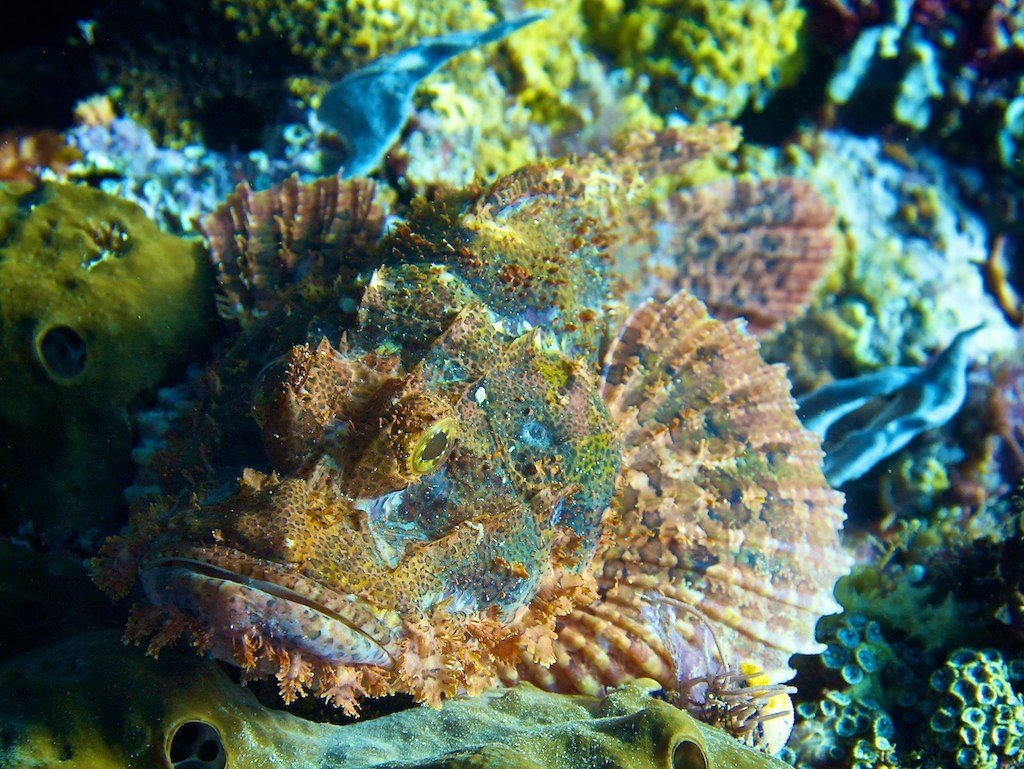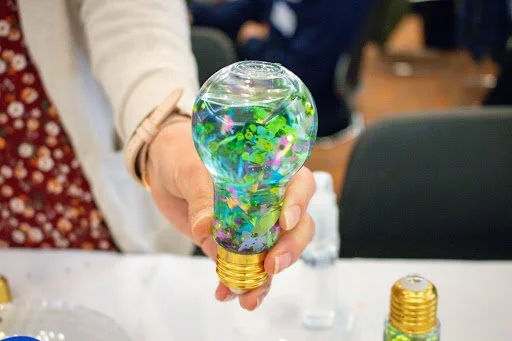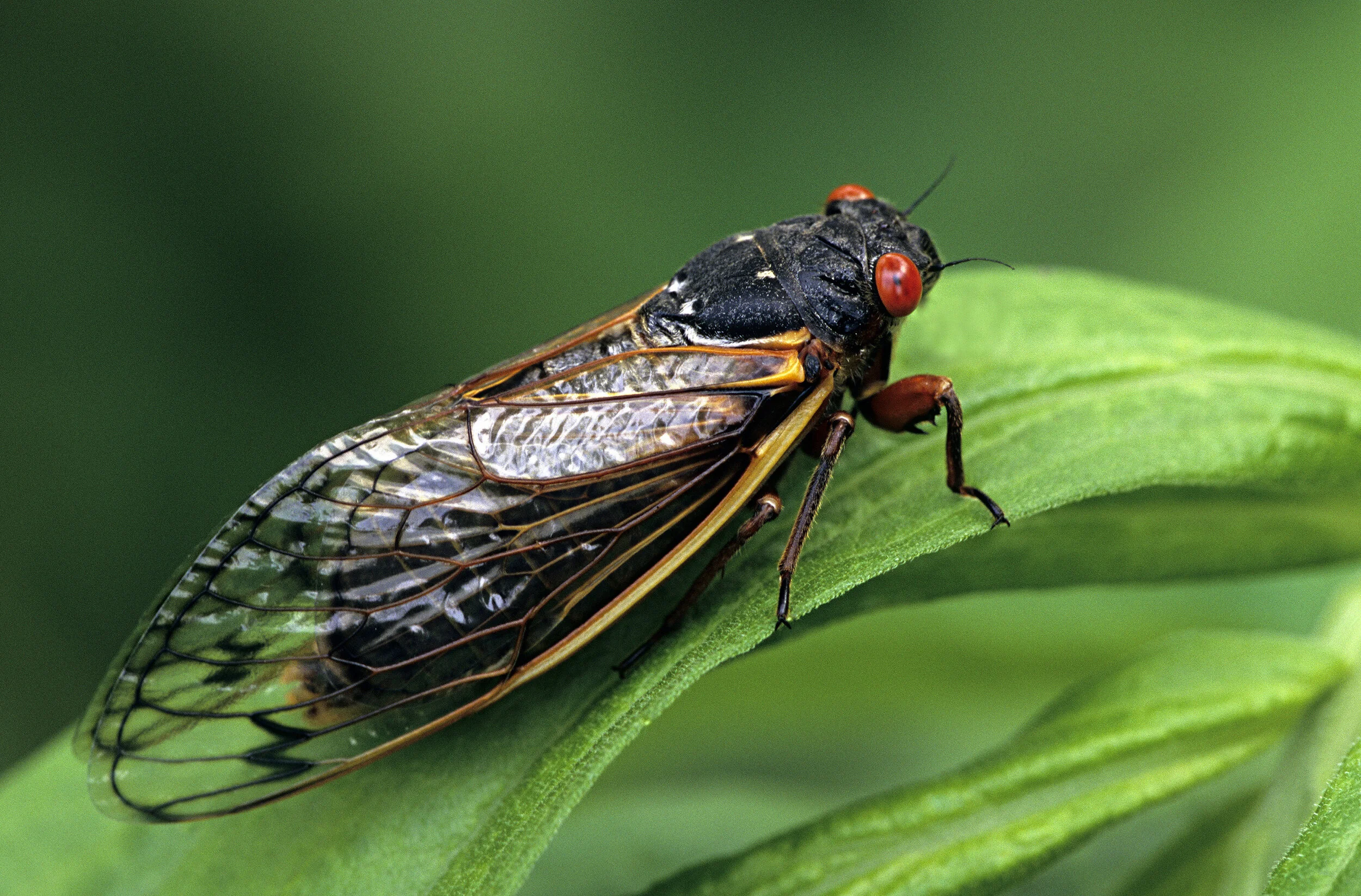Now you see them, now you don’t
FUN FACTS ABOUT ANIMAL CAMOUFLAGE
Squirrels have coloration that helps them blend in with trees and other parts of their environment
Source: https://www.plt.org/educator-tips/camouflage-nature-examples
Camouflage is a word that we use to describe the ability to blend into the background or environment. Animals have developed natural camouflage that allows them to hide in their natural habitats. Both predators and prey use camouflage for slightly different reasons. Prey animals want to hide so that predators can’t see and eat them. Predators want to not be seen so that they can sneak up on prey animals without them noticing. There are different types of camouflage that animals use to not be seen.
Color Matching
The most straightforward type of camouflage is called color matching. This is when an animal’s color is similar to the color of their habitat. You might have some animals who do this in your own backyard! Squirrels and deer are a light brown that can easily blend in with trees to make them less noticeable. Another animal who does this is the kangaroo, whose tan fur is very similar in color to the Australian bush.
Kangaroos blend in with the Australian vegetation
Source: https://www.maxpixel.net/Hiding-Nature-Camouflage-Wildlife-Kangaroo-Animal-4488552
Color change
A chameleon with it’s natural green coloration
Source: https://animalfactguide.com/animal-facts/chameleon/
Some animals are able to change their color as the colors change around them. The most well known of these animals is the chameleon, although these changes are not as dramatic as it looks in TV or movies. Chameleons can change color because they have a special type of skin cell called chromatophores, which contain pigment. The pigment is usually contained in a sac within the cell, so the color can’t be seen. However, the pigment can spread throughout the cell, making the color more visible There is a specific type of chromatophore called melanophores which have black or brown pigment. If the pigment is in the center of the cells, the chameleon looks lighter, but if the pigment is spread throughout the cells, the chameleon looks darker. Together this allows chameleons to change into a variety of colors and patterns. Surprisingly, chameleons instead use their natural green-brown color to blend in with leaves when they are hiding from a predator. Their crazy color changes actually depend more on their temperature or mood!
Illustration of how pigment in melanophore cells can move throughout the cell to make it appear lighter or darker. Some fish, frogs, and lizards have these cells.
Source: https://phys.org/news/2013-05-chameleons-creatures-colour.html
This cuttlefish has changed it’s coloration to match the sand and rocks on the ocean floor
Source: https://www.colorado.edu/chbe/2019/02/28/underwater-creatures-inspire-shape-shifting-color-changing-materials
Cuttlefish have impressive color changing abilities and can camouflage themselves against many different backgrounds. They are marine mollusks who live in warm areas of the ocean. Just like the chameleon, they have several layers of skin cells, including chromatophores which allows them to change colors and patterns. They use their brain to control each chromatophore individually, expertly camouflaging themselves against the diversity of colors and textures on the ocean floor.
Animals that live in northern areas that have solid snow coverage in the winter, but no snow in the summer often have fur that changes with the seasons. White fur works as great camouflage when snow is on the ground, but would be very noticeable when no snow is present. Arctic foxes and hares have brown fur in the summer and as the seasons begin to change they begin to shed their brown fur and grow white fur instead. This white fur lacks color because it does not have melanin, a natural pigment. Melanin is what gives your eyes, hair, and skin its color! The more melanin, the darker the pigment. This change in color allows arctic animals to blend in, no matter the season!
The arctic fox has different colored coats during the summer and winter to help it blend in as it’s environment changes throughout the year
Source: https://preview.redd.it/erxc8get3q961.jpg?auto=webp&s=8792c0ee5746309413a8f729ece8d89dc5b800e1
Disruptive Coloration
A jaguar resting in the shade
Source: https://www.reed.edu/biology/courses/BIO342/2015_syllabus/2014_WEBSITES/ngemwebsite/phylogeny.html
Part of what helps us identify objects or animals is their overall shape, or silhouette. Some animals use something called disruptive coloration to use this idea in camouflage. Patterns that do not go along with the lines of the body helps disrupt the animal’s silhouette and makes them more difficult to see, especially if the animal is under a shadow or partially blocked by plants.
Source: https://www.pikist.com/free-photo-vcmjs
Some large cats like leopards and jaguars have a very distinct spotted pattern that seems like it would make them stand out! However, in the wild it helps them be less visible as they move through trees and grass. The stripes on zebras work in a similar way, helping them be less visible especially behind vertical plants like trees.
Source: https://www.leisurepro.com/blog/explore-the-blue/masters-of-camouflage-stonefish-and-scorpionfish/
In the ocean, scorpionfish also exhibit disruptive coloration. Despite not being able to change the color of their skin, scorpionfish are great at hiding among coral or other sea life. They can come in many colors that help them hide in different locations. Some are brown or yellow which allows them to blend in with rocks and sand, while others are brighter colors like yellow or orange are able to hide best in coral. All scorpionfish have mottled, blotchy coloration on their skin, and feathery fins that make it difficult to notice their silhouette amongst the irregular shapes of corals and rocks.
Mimesis
Mimesis is when animals appear to look like something else, often plants. One of the largest insects in the world, the walking stick insect is a great example of this. Certain species of stick insects can grow over 20 inches long with their legs outstretched, so you would think they would be easy to spot. But these bugs do such a great job of looking like sticks, it’s difficult to notice them! They even sway back and forth to look like a branch swaying in the wind.
Source: https://www.nwf.org/Educational-Resources/Wildlife-Guide/Invertebrates/Walking-Sticks
Orchid mantis on an orchid flower
Source: https://www.indefenseofplants.com/blog/2016/9/6/the-orchid-mantis-might-not-be-so-orchid-after-all
Orchid mantises resemble plants in a much more colorful way. The round limbs and white and pink coloration of this insect make it resemble the petals of a flower. Because they resemble orchid flowers so much, they were named the orchid mantis, although they do not appear to be mimicking any flower in particular. Their disguise allows them to sit among flower petals unseen and await prey that are attracted to the flowers.
The entire body and tail of the leaf tailed gecko is specialized to look like a dry leaf. These geckos have a flat, triangular head, long flat bodies, and a very flat tail. Their shape, combined with their common mottled brown coloration allows them to essentially disappear into the trees.
The leaf tailed gecko looks exactly like what it’s name sounds like. This little lizard could easily be mistaken for a dry leaf
Source: https://www.thoughtco.com/satanic-leaf-tailed-gecko-facts-4155163
Predators and prey have a complicated relationship that has resulted in evolutionary changes in both groups. Many animals have developed some kind of camouflage to help them not be seen, either so that they can eat, or avoid being eaten. The strategy that is used for camouflage varies, and can result in some crazy looking animals! If you needed to camouflage yourself, what techniques would you use?
Other Resources
Here are some links to other resources that may help you better understand animal camouflage
https://animals.howstuffworks.com/animal-facts/animal-camouflage.htm
https://someinterestingfacts.net/animal-camouflage-facts/
https://www.nationalgeographic.org/encyclopedia/camouflage/
References:
Elucidating cuttlefish camouflage. (n.d.). Retrieved February 3, 2022, from https://www.mpg.de/12363924/1017-hirn-080434-elucidating-cuttlefish-camouflage
How Animal Camouflage Works. (2001, May 18). HowStuffWorks. https://animals.howstuffworks.com/animal-facts/animal-camouflage.htm
Scorpionfish. (n.d.). Oceana. Retrieved February 3, 2022, from https://oceana.org/marine-life/scorpionfish/
Society, N. G. (2011, August 25). Camouflage. National Geographic Society. http://www.nationalgeographic.org/encyclopedia/camouflage/
Stuart-Fox, D., & Conversation, T. (n.d.). How do chameleons and other creatures change colour? Retrieved February 3, 2022, from https://phys.org/news/2013-05-chameleons-creatures-colour.html
Walking Sticks. (n.d.-a). National Wildlife Federation. Retrieved February 3, 2022, from https://www.nwf.org/Home/Educational-Resources/Wildlife-Guide/Invertebrates/Walking-Sticks

































